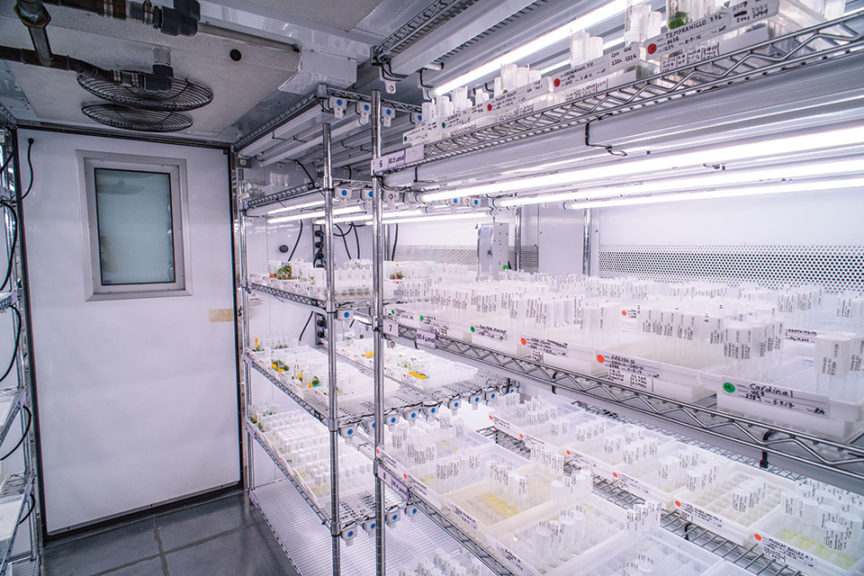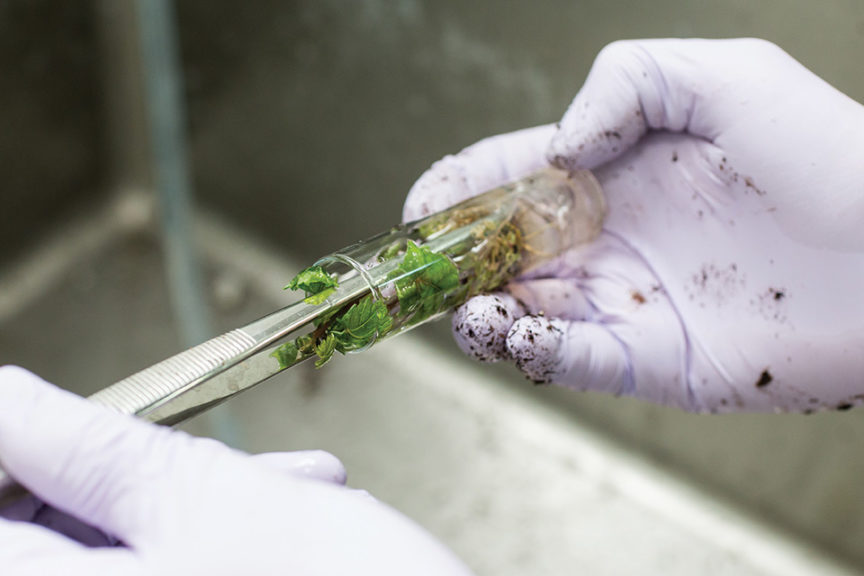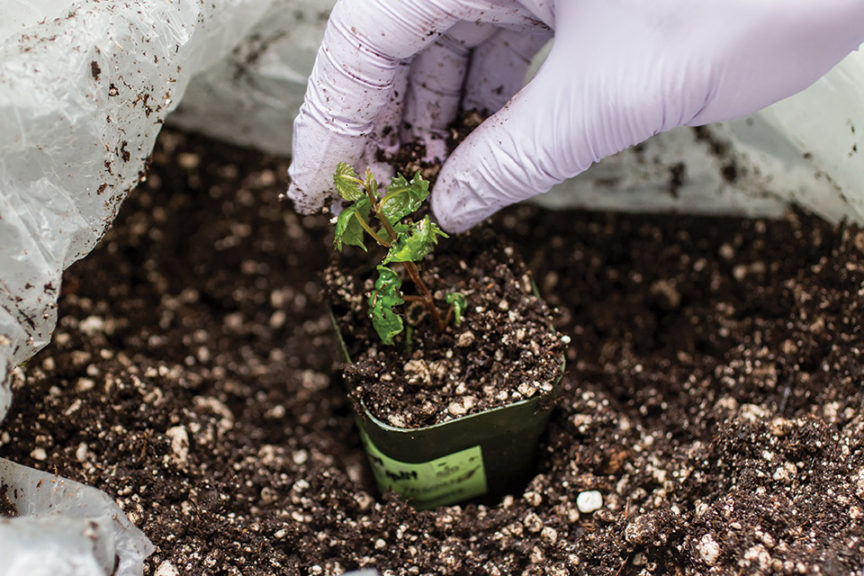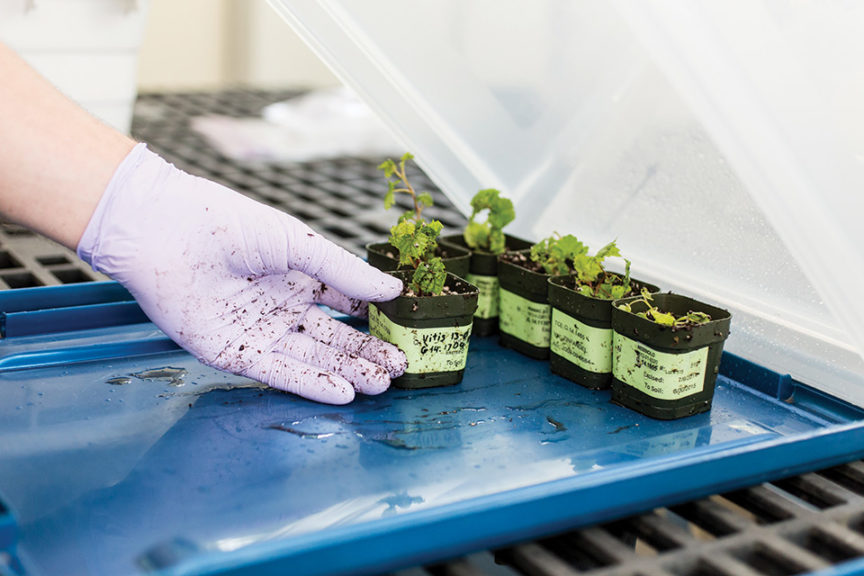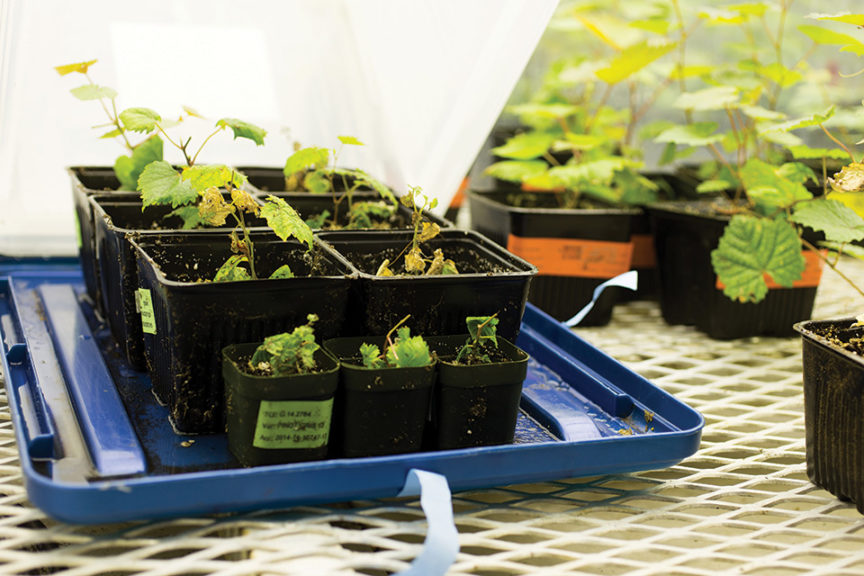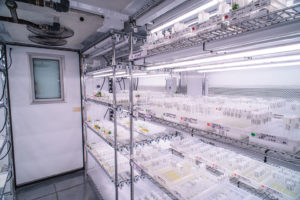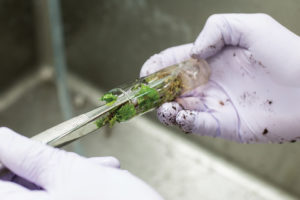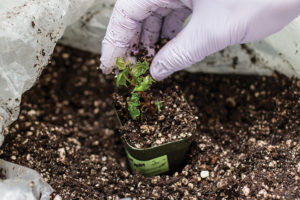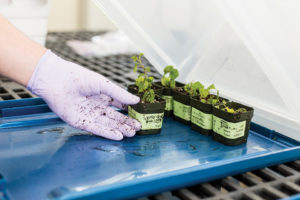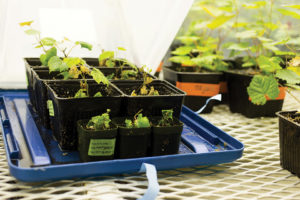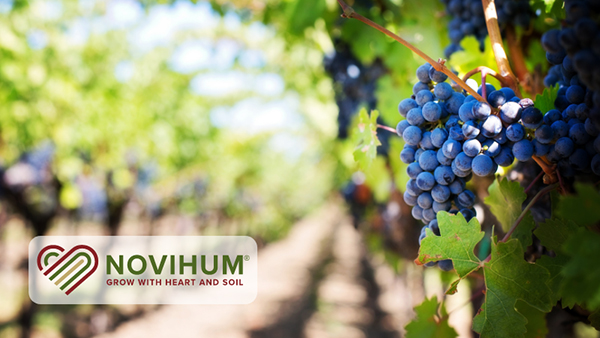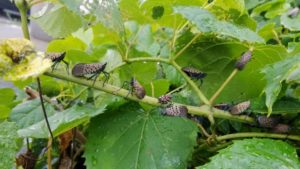Tissue Culture Helps Nurseries Produce Virus-Free Grape Vines
Tissue culture, a century-old plant science, was first applied to grapevines in the mid-1940s to establish sterile in-vitro tissue cultures. The rapid production of clean, disease-free, and vigorous plant material in a shorter time period, compared to conventional propagation techniques, has contributed to the adoption of this technology among leading nurseries supplying the main wine-producing regions in the U.S.
Advancements In Propagation
Several factors have prompted the research in grapevine tissue cultures in the last few decades, including the development of micro-propagation protocols for grapevine materials, the elimination of viruses from plant material using meristem cultures and somatic embryogenesis, the development of methods to perform embryo-rescue in breeding programs that target seedless grapevine cultivars, the development of culturing systems to support genetic manipulation of grapevine cultivars, the use of cell-based cultures to study-specific aspects of grapevine development and/or berry ripening, and the production of valuable metabolites for grapevine suspension cultures.
An important milestone in plant tissue culture in the U.S. was the creation of the National Clean Plant Network (NCPN) – a voluntary association of specialty crop networks that have joined to promote the use of pathogen-tested, healthy plant material for specialty crops (including grapes) since 2005.
The NCPN is formed by clean plant centers located at universities and institutions across the U.S., such as the Foundation Plant Services (University of California, Davis) — the network headquarters — the Clean Plant Center Northwest (Washington State University), among a few others dedicated to grapes around the country.
Clone Consistency is Key
Herrick Grapevines, based in Sacramento, CA, offers a variety of ENTAV-INRA French clones and California-Certified grapevine clones from FPS, as well as custom grafted projects to meet vineyard needs. Diego Barison, Herrick’s General Manager, says the main advantage of tissue culture technology was its ability to provide clean plant material, using it to clean a clone that originally had a virus.
“You take a small piece of the tip. Then at that point, that part of the plant is still clean. The virus didn’t make it to the tip yet,” he says.
According to Barison, Herrick’s mother stock came from FPS. However, the materials intended for commercial use are obtained by regular grafting or oogamyc techniques.
“It’s a couple of years before you can get them out to the client and in tissue culture sometimes you can have too much variability. We want to make sure the clone we provide is the true clone,” he says.
In order to ensure the plants are clean and virus free, Herrick tests the mother line and also the clones for its clients. Barison adds that aside from the regular check they do in their vineyard; Herrick does a full panel for every single clone or variety before they propagate.
“We use an independent lab to do that because they are doing a lot more tests than we would be doing internally,” he says.
Meeting Growers’ Needs
Skagit Horticulture, located in the Yakima Valley — the largest winegrape producing area in the Northwest — has its roots in the ornamental industry. Debbie Thorne, in charge of Agricultural Sales and New Product Development for the company, explains that Skagit’s sister company – Precept Wine and Winemakers LLC – made them aware of the need for virus-free, clean plants for the industry.
Thorne adds that Skagit’s General Manager Jerrin Victor had a background in tissue culture, therefore they decided to invest in developing a TC lab that could service the industry as well as using their ornamental and propagation experience to create products that would meet the winegrowers needs.
Mark Buchholz, President/CEO of Skagit, believes their background and connections with Precept Wines can make an impact in this winegrape-growing region.“The same group that owns us owns Precept Wines, so we are firmly planted so to speak in viniculture through ownership, “ he says. “Propagation is supplied in a number of ways by a number of different suppliers. We have the ability to work with the suppliers of certified virus-free plants because of our expertise and operating discipline that has been developed over many years of growing ornamentals.”
According to Buchholz, two factors could give them a strong competitive edge – a highly developed operating discipline in place by having to handle thousands of ornamental varieties that are intensely managed over short periods of time, as well as a world-class plant factory facility in Yakima. “It’s a very large facility, set up to very quickly produce for sale large numbers of plants including grapes or hops. We feel we are able to provide something very valuable to an orchard or vineyard operators,” he says.
For the last few months, Skagit has been capturing varieties from the National Clean Plant Network.
“From that, we are building an inventory so we can supply plants to the farmers,” adds Thorne.
Solving Key Challenges
One important issue with the traditional nursery process is the chance of virus and disease reinfection. According to Curt Granger, VP of Global Grapes Sales for Phytelligence Smart Agriculture, their objective is to take clean materials back inside, “thus keeping the wood true to type, with the right rootstock, as well as virus- and disease-free.” The creators of the MultiPhy Process approach, includes taking the materials to a controlled, indoor environment, thus eliminating the chance of reinfection.
The second challenge is labor scarcity. All agree the ag industry is changing as it faces this pressing issue, and winegrowers and nurseries are not the exception.
Barison points out their high dependency on labor force, particularly in propagation. “We don’t need specialized labor, we can train them, they just have to be willing to work,” he says.
Granger says its field-budding techniques eliminate future production of suckers by bench-grafting machines because its vines are generated from plant tissue culture and not propagated cuttings. He says most suckering and thinning work on a standard bare-root dormant vine is at the graft union, low to the ground. This allows for a production shift and cost savings.
“It gets to the wire faster, which allows for earlier spraying and saves labor,” he says. Skagit’s representatives say fruit and grape production is changing and in response to these changes, Skagit is using what they refer to as its plant factory.
“We are right there with the farmers, in the same boat,” Buchholz says. “We need to produce more, right on time, higher quality, at less cost, and we are part of the solution for them. We want to help them get some of the uncertainty out.”





